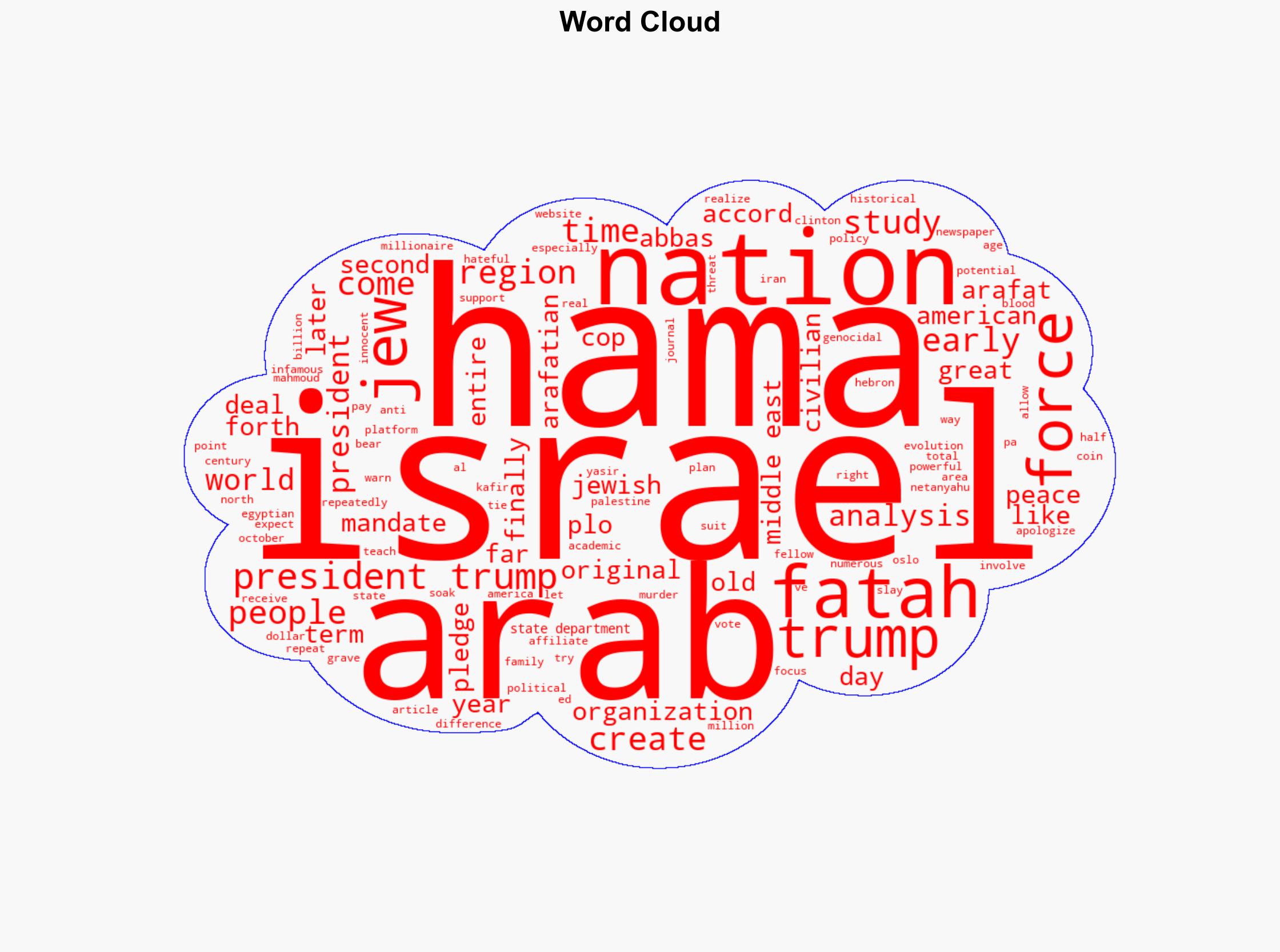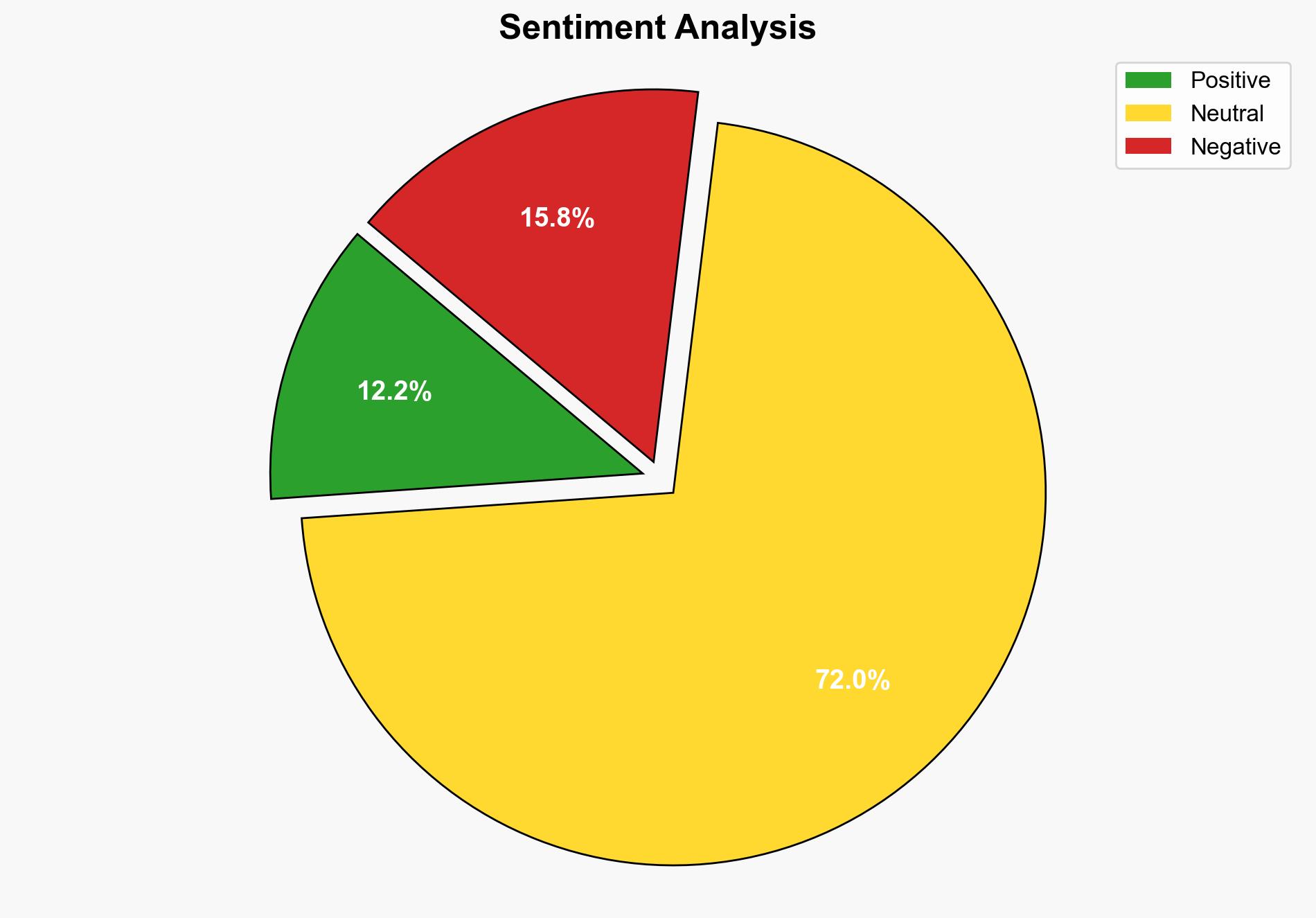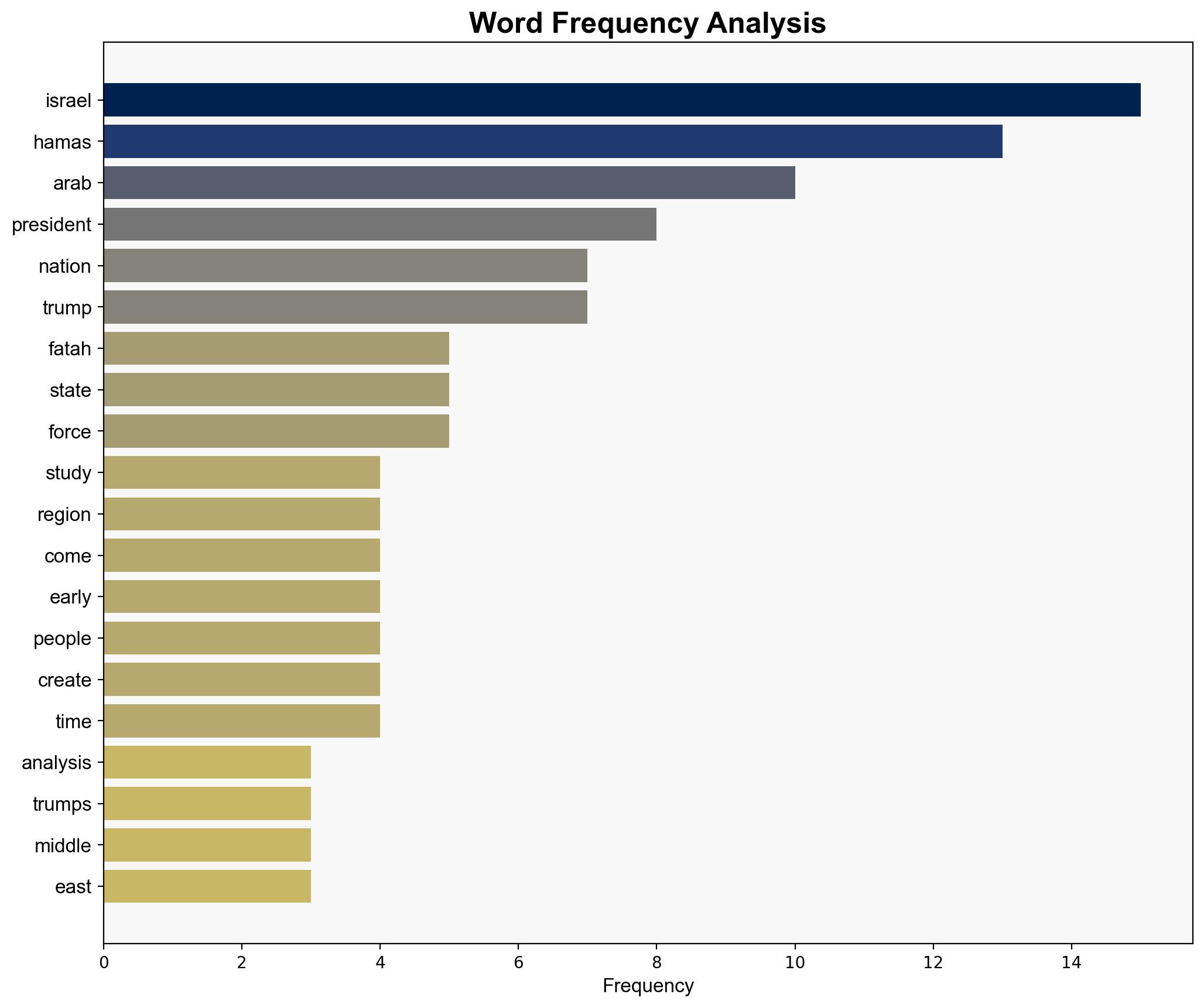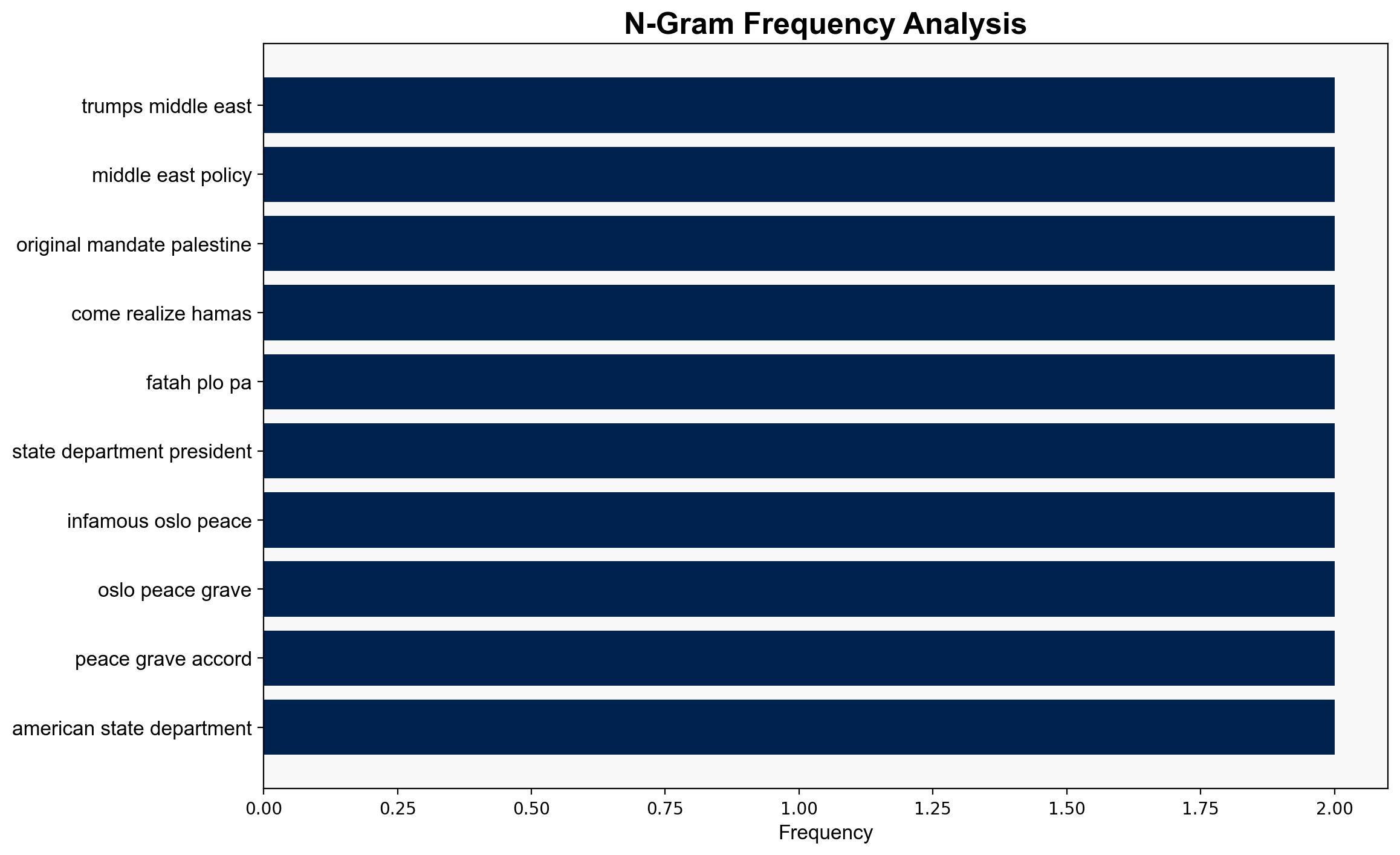A review of US Middle East Policy – Israelnationalnews.com
Published on: 2025-10-01
Intelligence Report: A review of US Middle East Policy – Israelnationalnews.com
1. BLUF (Bottom Line Up Front)
The analysis suggests that the U.S. Middle East policy under President Trump has been perceived as favoring Israel, potentially exacerbating tensions with Palestinian factions. The most supported hypothesis is that U.S. policy has inadvertently strengthened hardline positions among Palestinian groups, reducing the likelihood of a negotiated peace. Confidence level: Moderate. Recommended action: Reassess U.S. diplomatic strategies to balance support for Israel with engagement efforts towards Palestinian entities to mitigate further escalation.
2. Competing Hypotheses
1. **Hypothesis A**: U.S. policy under Trump has reinforced Israeli security while marginalizing Palestinian interests, leading to increased radicalization among Palestinian factions.
2. **Hypothesis B**: U.S. policy has been strategically designed to pressure Palestinian factions into negotiations by demonstrating unwavering support for Israel, aiming to force a recalibration of Palestinian strategies.
Using the Analysis of Competing Hypotheses (ACH) 2.0, Hypothesis A is better supported due to the observable increase in anti-Israel rhetoric and actions by Palestinian groups, as well as the lack of progress in peace negotiations.
3. Key Assumptions and Red Flags
– **Assumptions**: It is assumed that Palestinian factions are monolithic in their response to U.S. policy, which may overlook internal divisions and differing strategies.
– **Red Flags**: The narrative heavily relies on historical grievances and may not fully account for recent shifts in regional alliances or internal Palestinian politics.
– **Blind Spots**: Potential overemphasis on the role of U.S. policy without considering the influence of other regional actors like Qatar and Turkey.
4. Implications and Strategic Risks
– **Patterns**: Continued U.S. support for Israel without addressing Palestinian grievances could lead to increased regional instability and potential for violent escalations.
– **Cascading Threats**: Heightened tensions may spill over into broader regional conflicts, involving other Middle Eastern nations and non-state actors.
– **Economic and Geopolitical Risks**: Prolonged conflict could disrupt regional trade routes and energy supplies, impacting global markets.
– **Psychological Dimensions**: Persistent conflict may fuel anti-American sentiment, impacting U.S. interests and citizens abroad.
5. Recommendations and Outlook
- Engage in multilateral diplomacy involving regional stakeholders to create a balanced approach that addresses both Israeli security and Palestinian aspirations.
- Consider confidence-building measures, such as economic incentives or humanitarian aid, to reduce tensions and foster dialogue.
- Scenario Projections:
- **Best Case**: Successful diplomatic engagement leads to renewed peace talks and a reduction in hostilities.
- **Worst Case**: Escalation of violence resulting in a broader regional conflict.
- **Most Likely**: Continued stalemate with periodic flare-ups of violence.
6. Key Individuals and Entities
– Donald Trump
– Mahmoud Abbas
– Yasir Arafat
– Hamas
– Fatah
– PLO
7. Thematic Tags
national security threats, regional focus, counter-terrorism, geopolitical strategy





